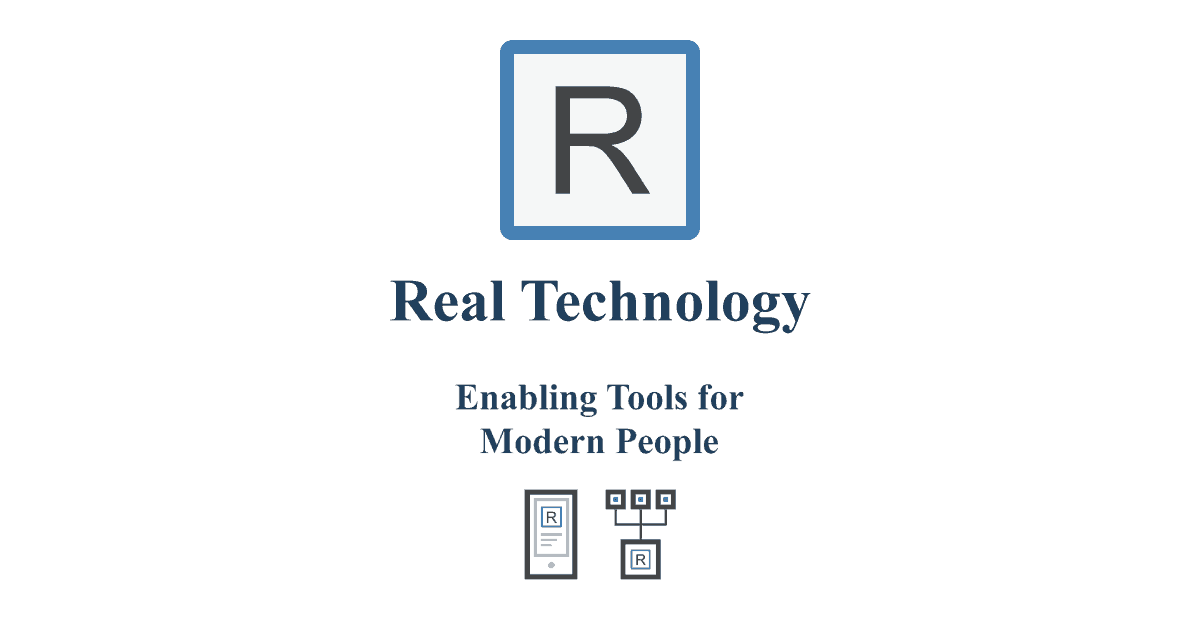If you follow tech space, then you must be aware of the now legendary story of Apple Computers. Steve Jobs and Steve Wozniak built a DIY computer kit that could be attached to a TV monitor and that is how the first personal computer was born. Indeed, they did it just as a hobby. How fascinating it is then, that this simple DIY idea subsequently led to the founding of a professional organization which has the highest market cap today?
Over the past few years, many DIY IoT kits have emerged. Some have evolved as de facto prototyping boards, like the Raspberry Pi while there are many more which continue to fuel the maker communities across the world. When we hear the term DIY, we tend to think of hobby projects or one of those temporary side projects, just like what the Apple co-founders initially did. However, have you wondered if there is a professional way of doing IoT via the DIY route?
That is precisely what Real Technologies (RT) from Italy is trying to achieve. Founded by three young and dynamic guys, they are changing the way you do DIY IoT retrofit work and turn it professional through a select set of use cases. Using their IoT-enabling suite of apps and hardware kit, a person can follow some step by step instructions to convert almost any electromechanical device into an intelligent cyber-physical system.
Introducing Realogy and Tools For IoT Retrofit
RT offers a suite of tools branded as Realogy. It mainly comprises of two components, the Realino device, and the Realer platform. While Realino consists of the standard IoT stuff comprising hardware and interfaces that support the connections to sensors and actuators, Realer is the cloud platform that enables remote monitoring and control of Realino devices.
[one_half_first]![]() [/one_half_first][one_half_last]
[/one_half_first][one_half_last]![]() [/one_half_last]
[/one_half_last]
On the face of it, this sounds like the typical IoT kit. What differentiates them is their approach towards building real systems using these components that are truly ready and easy to use for IoT retrofitting. RT’s vision is to enable real-world cyber-physical systems by building a set of pluggable components that can be easily integrated into existing electromechanic-based systems with the help of easy to follow instructions. This way, anyone with basic knowledge and DIY attitude can promptly enable cyber-physical systems for personal use or commercial or other business uses.
You can check out their intro video here to understand how a young, self-employed person can become an enabler of IoT systems and applications:
[video_page_section type=”youtube” position=”default” image=”” btn=”light” heading=”Reat Technology Product Introdution” subheading=”Realogy Tools” cta=”Watch the Video” video_width=”1080″ hide_related=”true” hide_logo=”false” hide_controls=”false” hide_title=”false” hide_fullscreen=”false”]https://www.youtube.com/watch?v=kFXnYfAfsRE&feature=youtu.be[/video_page_section]
Target Use Cases
RT’s business approach is to partner with specific stakeholders in specific market segments to make the IoT retrofit experience work seamlessly through DIY, in a practical way.
One of their primary focus is smart homes. Naturally, most householders will never want to do a DIY and convert their appliances into cyber-physical systems. That is where smart home retrofit use cases come into the picture. RT is partnering with housing developers, architects and home utility integrators (electricians, plumbing contractors, etc.) who can adapt their suite of tools and offer easy retrofit options to householders.
Here is a demo of how a technician can follow their instruction set to upgrade an air conditioner. Just sit back, relax, and enjoy the video as a DIYer!
[video_page_section type=”youtube” position=”default” image=”” btn=”light” heading=”IoT Retrofitting ” subheading=”Retrofitting an Air Conditioner” cta=”Watch Video” video_width=”1080″ hide_related=”true” hide_logo=”false” hide_controls=”false” hide_title=”false” hide_fullscreen=”false”]https://www.youtube.com/watch?v=6oVuaDuk9Q4&feature=youtu.be[/video_page_section]
Another area of interest for them is the industrials. In this segment, they are eying the sensor and actuator manufacturers, as well as OEMs who provide industrial equipment which is traditionally not IoT enabled. One typical example is electric boilers.
Similar use cases can also be evolved around smart city applications. The Realino hardware kit is very extensible, so it can be easily adapted for connecting a wide variety of devices in the public sector and convert them into cyber-physical systems.
Making It A Reality
The thing that impresses me about Real Technologies is their vision to enable the next wave of DIY revolution that is intended for professionals and not only hobbyists. Their approach to DIY IoT retrofit, if marketed well, can provide that ecosystem to their partners to monetize services at the next level, beyond the simple installation, commissioning and repair works.
Partnerships are the key here. Moreover, even more critical for them is to capture the market so that they can thwart the companies that are coming up with inbuilt cyber-physical capabilities. That is why they are now in overdrive to take this concept to the next level and seeking partnerships.
We wish them all the best in this pursuit of enabling a cyber-physical system in the most hassle-free way such that it becomes a practical solution designed to work for years.
Before I sign off, here is a video of one of the very early prototypes that they built a few years ago where Sergio, one of the co-founders, proudly shows off the basic functionality of the system.
Don’t be afraid to see the bare hardware patched up with the breadboard. They have come a long way from there.
Here’s wishing them all the best for their venture.



How to power a mini pc in a portable form factor way like which batteries would be required and how to connect? 100 to 240 w …
I don’t understand if your question is related to this article…